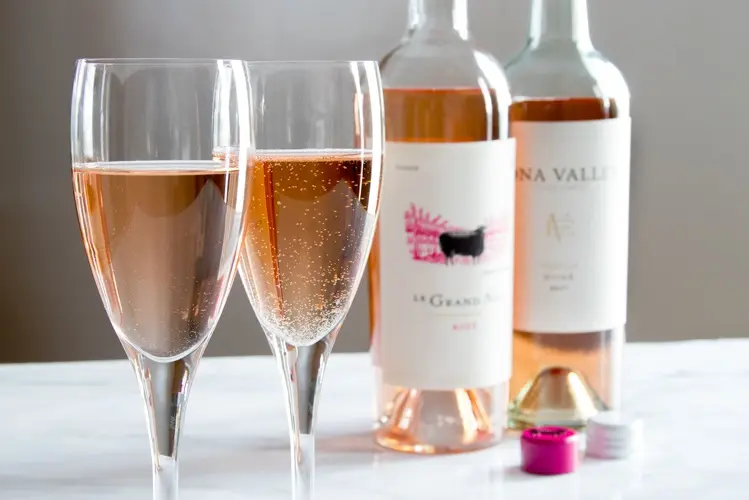Rosé Zinfandel, known for its vibrant color and delightful flavors, is a popular choice among wine enthusiasts. This wine, which offers a refreshing alternative to traditional reds and whites, is particularly favored for its versatility and food-pairing potential. However, as with any alcoholic beverage, it’s important to consider the nutritional aspects, particularly calorie content. In this article, we will delve into the calorie content of Rosé Zinfandel, explore factors affecting its caloric value, and provide insights into how it fits into a balanced diet.
Understanding Rosé Zinfandel
Rosé Zinfandel is a type of rosé wine made primarily from Zinfandel grapes. Unlike red wines, which are fermented with grape skins to extract color and tannins, rosé wines are typically fermented with minimal skin contact. This results in a lighter color and a different flavor profile compared to red wines. Rosé Zinfandel is known for its bright pink hue and a flavor profile that often includes notes of red berries, citrus, and sometimes a hint of spice.
Caloric Content of Rosé Zinfandel
The calorie content in a bottle of Rosé Zinfandel can vary based on several factors, including the alcohol content, residual sugar, and serving size. On average, a 750 ml bottle of Rosé Zinfandel contains approximately 600-650 calories.
To break this down further:
Alcohol Content: Rosé Zinfandel typically has an alcohol content ranging from 10% to 13% ABV (alcohol by volume). Higher alcohol content generally results in higher calorie counts because alcohol contributes 7 calories per gram. Therefore, a bottle with a higher ABV will contain more calories from alcohol.
Residual Sugar: Rosé wines can range from dry to slightly sweet. The residual sugar in sweeter rosés adds extra calories. A dry Rosé Zinfandel will have fewer calories from sugar compared to a semi-sweet or sweet version. On average, a gram of sugar adds about 4 calories.
See Also: How Much Sugar in a Bottle of Merlot?
Calorie Breakdown
To give a more precise idea, let’s look at the calorie distribution in a typical bottle of Rosé Zinfandel:
Alcohol: Assuming an average ABV of 12%, a 750 ml bottle of Rosé Zinfandel contains roughly 90 grams of alcohol. This amounts to approximately 630 calories (90 grams x 7 calories/gram).
Sugar: Depending on the sweetness level, a bottle of Rosé Zinfandel may contain between 5 and 20 grams of sugar. For a semi-sweet rosé, you might expect around 10 grams of sugar, contributing an additional 40 calories (10 grams x 4 calories/gram).
Factors Affecting Caloric Content
Several factors can influence the calorie content in Rosé Zinfandel:
Grape Variety and Winemaking Techniques: Different grape varieties and winemaking methods can affect the sugar levels in the wine. For example, if the grapes used have a higher natural sugar content or if the winemaking process involves additional sugar, the final product will be sweeter and thus higher in calories.
Region of Production: Rosé Zinfandels from different regions may have varying alcohol contents and sweetness levels. For instance, a Rosé Zinfandel from a warmer climate might have higher alcohol content compared to one from a cooler climate.
Winemaker’s Style: Some winemakers may add additional sugar or adjust the alcohol content to suit their style, which can impact the overall caloric content.
Comparing with Other Rosés
When comparing Rosé Zinfandel to other rosé wines, it’s helpful to understand how its calorie content stacks up:
Dry Rosé: Generally contains fewer calories compared to sweet rosés due to lower sugar content. A dry rosé with similar alcohol content will usually fall within the same calorie range as a Rosé Zinfandel.
Sweet Rosé: Typically higher in calories due to added sugars. These rosés can exceed the calorie count of a standard Rosé Zinfandel, especially if the sweetness level is pronounced.
Calorie Considerations for a Balanced Diet
For those who are mindful of their caloric intake, understanding the calorie content in Rosé Zinfandel can help with making informed choices. Here are a few tips to enjoy Rosé Zinfandel while managing calorie consumption:
Moderation: Enjoying a moderate amount of Rosé Zinfandel can help keep calorie intake in check. A standard serving size of 5 ounces (about 150 ml) contains approximately 80-90 calories. Keeping to one or two servings can help maintain balance.
Food Pairing: Pairing Rosé Zinfandel with lighter dishes, such as salads, seafood, or grilled vegetables, can complement the wine’s profile while balancing overall calorie intake for a meal.
Active Lifestyle: Incorporating regular physical activity into your routine can help offset the calories consumed from alcoholic beverages. This approach allows you to enjoy your favorite drinks without significantly impacting your overall caloric balance.
Conclusion
Rosé Zinfandel is a delightful and versatile wine that offers a range of flavors and a refreshing alternative to red and white wines. While a bottle of Rosé Zinfandel contains around 600-650 calories on average, various factors such as alcohol content and residual sugar can affect this number. Understanding these factors can help you make informed choices and enjoy Rosé Zinfandel as part of a balanced diet. Remember, moderation and mindful.


